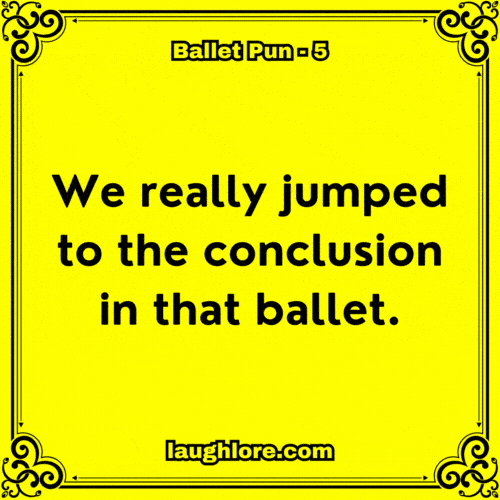Mastering Briefs: Techniques For Clear And Concise Communication

Table of Contents
Understanding the Purpose of a Brief
A brief is a concise document outlining the goals, objectives, and expectations of a project. It serves as a roadmap for all involved parties, ensuring everyone is on the same page from the outset. The importance of a well-written brief transcends specific industries; from marketing and design to project management and software development, a strong brief is fundamental. Different types of briefs exist, each tailored to specific needs:
- Creative Briefs: Used in advertising and marketing to guide the creative process, specifying target audience, brand messaging, and desired outcomes.
- Project Briefs: A broader document used in project management, defining project scope, deliverables, timelines, and budget.
- Design Briefs: Focus on the visual aspects of a project, detailing design requirements, brand guidelines, and target audience preferences.
A well-structured brief should always:
- Clearly define the objectives of the project. What needs to be achieved?
- Identify the target audience. Who is this project for? Understanding their demographics, needs, and preferences is crucial.
- Outline the scope of the project. What tasks are included, and what are explicitly excluded?
- Set realistic deadlines. Allow ample time for each stage of the project, incorporating potential delays.
Structuring a Winning Brief
The structure of your brief is vital for its effectiveness. A logical flow and clear organization enhance readability and comprehension. Use headings, subheadings, bullet points, and visuals to break up large chunks of text and make the information easily digestible. Consider this optimal structure:
- Executive Summary: A concise overview summarizing the entire brief’s key points. This should be the first thing the reader sees.
- Background/Context: Provide relevant information needed to understand the project's background and its purpose. Include any pertinent historical data or context.
- Objectives: Clearly state the specific, measurable, achievable, relevant, and time-bound (SMART) goals of the project.
- Target Audience: A detailed description of the intended recipients, including demographics, psychographics, and needs.
- Key Messages/Deliverables: Outline the specific outputs expected from the project. Be precise and avoid ambiguity.
- Timeline/Budget: Provide a realistic schedule and budget, outlining key milestones and anticipated costs.
- Call to Action: Clearly state the next steps required, assigning responsibilities and setting expectations for follow-up.
Writing with Clarity and Conciseness
Precision in language is paramount when crafting effective briefs. Avoid jargon, ambiguity, and overly complex sentences. Prioritize readability and conciseness. Here’s how:
- Use active voice: Active voice is more direct and easier to understand than passive voice.
- Employ strong verbs: Strong verbs make your writing more impactful and engaging.
- Eliminate unnecessary words and phrases: Cut out any words or phrases that don't add value to the message.
- Use visuals to support text: Charts, graphs, and images can clarify complex information and improve readability.
- Proofread carefully for errors: Thorough proofreading ensures clarity and professionalism. A single typo can undermine credibility.
Effective Collaboration and Feedback
Effective brief writing is a collaborative process. Involving stakeholders early helps ensure buy-in and alignment. Gather feedback from multiple sources to refine the brief and identify potential issues early on.
- Involve stakeholders early in the process: This ensures everyone's input is considered and avoids misunderstandings later.
- Seek feedback from multiple sources: Different perspectives can highlight areas for improvement.
- Be open to constructive criticism: Embrace feedback as an opportunity to refine the brief and improve its clarity.
- Iterate on the brief based on feedback received: Use feedback to make necessary adjustments and improve the document.
Conclusion
Mastering briefs is essential for successful project management and communication. By understanding the purpose, structure, and writing style of a well-crafted brief, and fostering collaboration, you can significantly improve your project outcomes. We've covered defining the brief's purpose, structuring it for clarity, writing concisely, and collaborating effectively for feedback. By implementing these techniques, you can significantly enhance communication, streamline workflows, and achieve better results. Start implementing these techniques today and experience the difference! [Link to a brief template download, if applicable].

Featured Posts
-
 Cedric Klapischs Colours Of Time Studiocanal Secures Distribution Deal At Cannes
May 23, 2025
Cedric Klapischs Colours Of Time Studiocanal Secures Distribution Deal At Cannes
May 23, 2025 -
 How Johnson Mattheys Honeywell Transaction Boosted Bts Profit
May 23, 2025
How Johnson Mattheys Honeywell Transaction Boosted Bts Profit
May 23, 2025 -
 Ronaldo I Kho Lund Slavnoto Slav E I Reaktsi Ata Na Cr 7
May 23, 2025
Ronaldo I Kho Lund Slavnoto Slav E I Reaktsi Ata Na Cr 7
May 23, 2025 -
 Zimbabwe Triumphant Muzarabanis Nine Wickets Secure First Test Win Against Bangladesh
May 23, 2025
Zimbabwe Triumphant Muzarabanis Nine Wickets Secure First Test Win Against Bangladesh
May 23, 2025 -
 Cat Deeleys Stylish Midi Dress Check M And S Stock
May 23, 2025
Cat Deeleys Stylish Midi Dress Check M And S Stock
May 23, 2025
Latest Posts
-
 A Weekend Of Events Fashion Heritage Ballet And Puns Included
May 23, 2025
A Weekend Of Events Fashion Heritage Ballet And Puns Included
May 23, 2025 -
 Weekend Events Featuring Fashion Heritage Ballet And More
May 23, 2025
Weekend Events Featuring Fashion Heritage Ballet And More
May 23, 2025 -
 Fashion Heritage And Ballet Weekend Events Not To Miss
May 23, 2025
Fashion Heritage And Ballet Weekend Events Not To Miss
May 23, 2025 -
 Discover Weekend Events Fashion Heritage Ballet And Puns
May 23, 2025
Discover Weekend Events Fashion Heritage Ballet And Puns
May 23, 2025 -
 Ballet Fashion And Heritage A Weekend Of Events
May 23, 2025
Ballet Fashion And Heritage A Weekend Of Events
May 23, 2025
